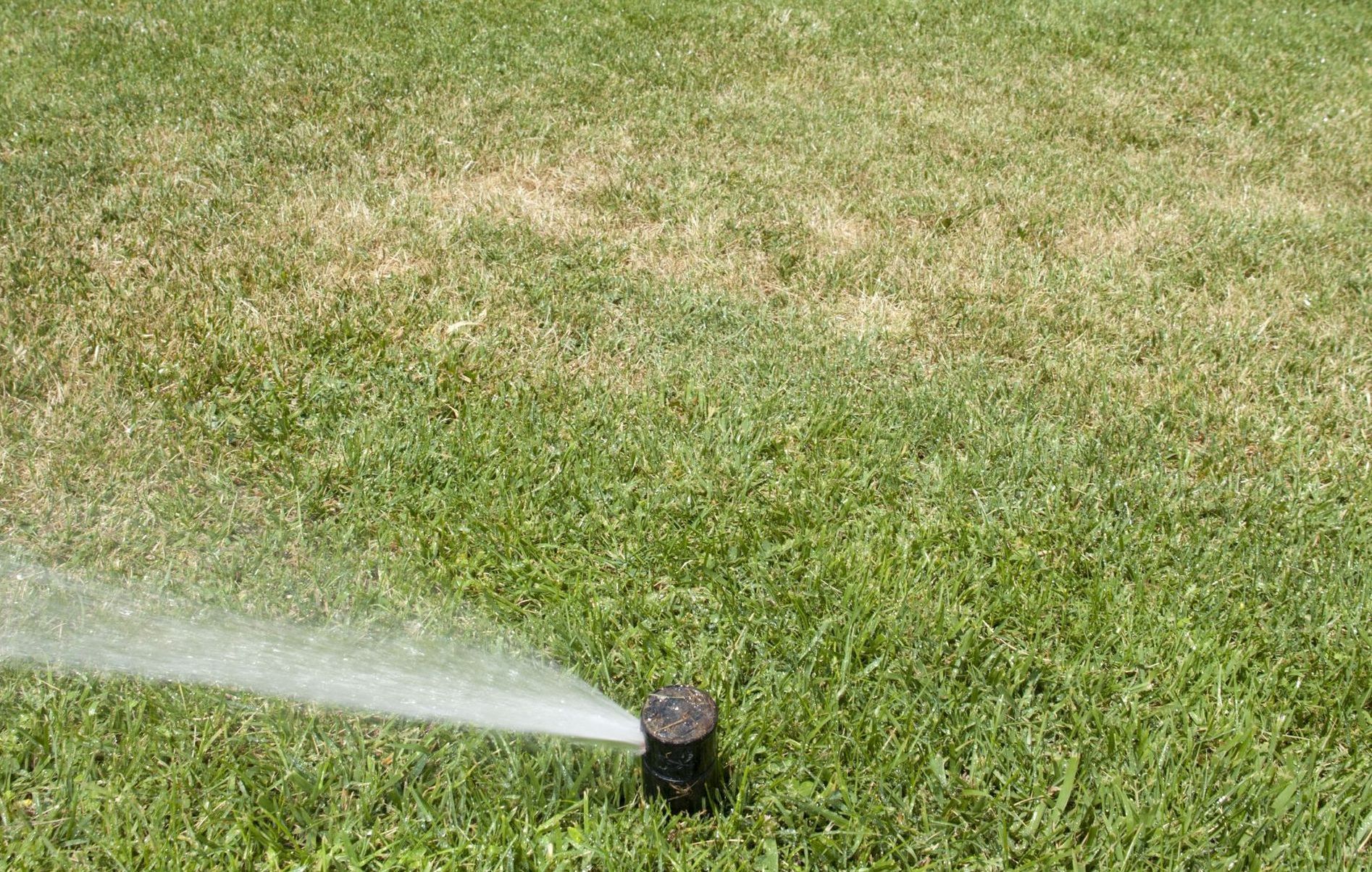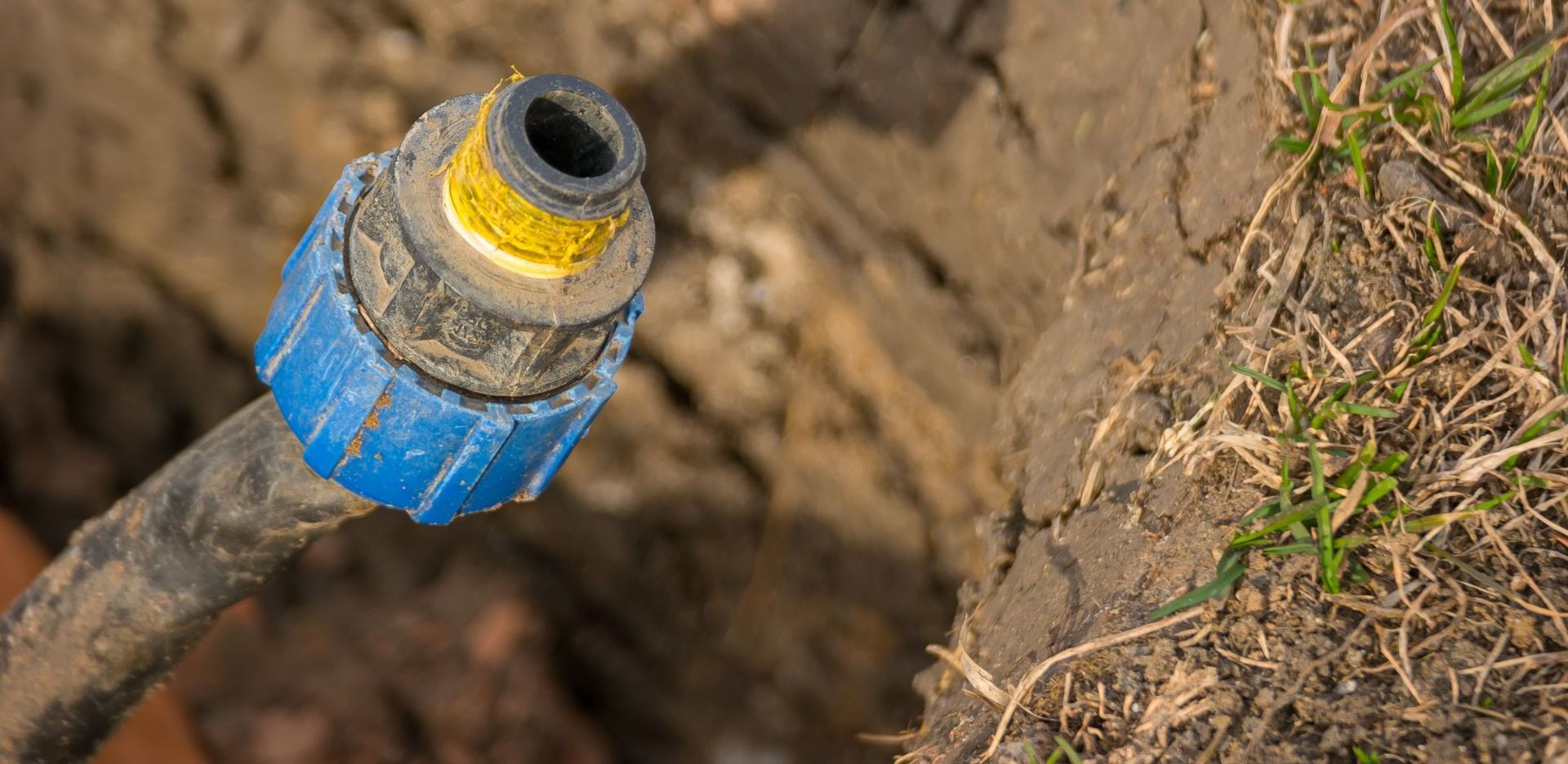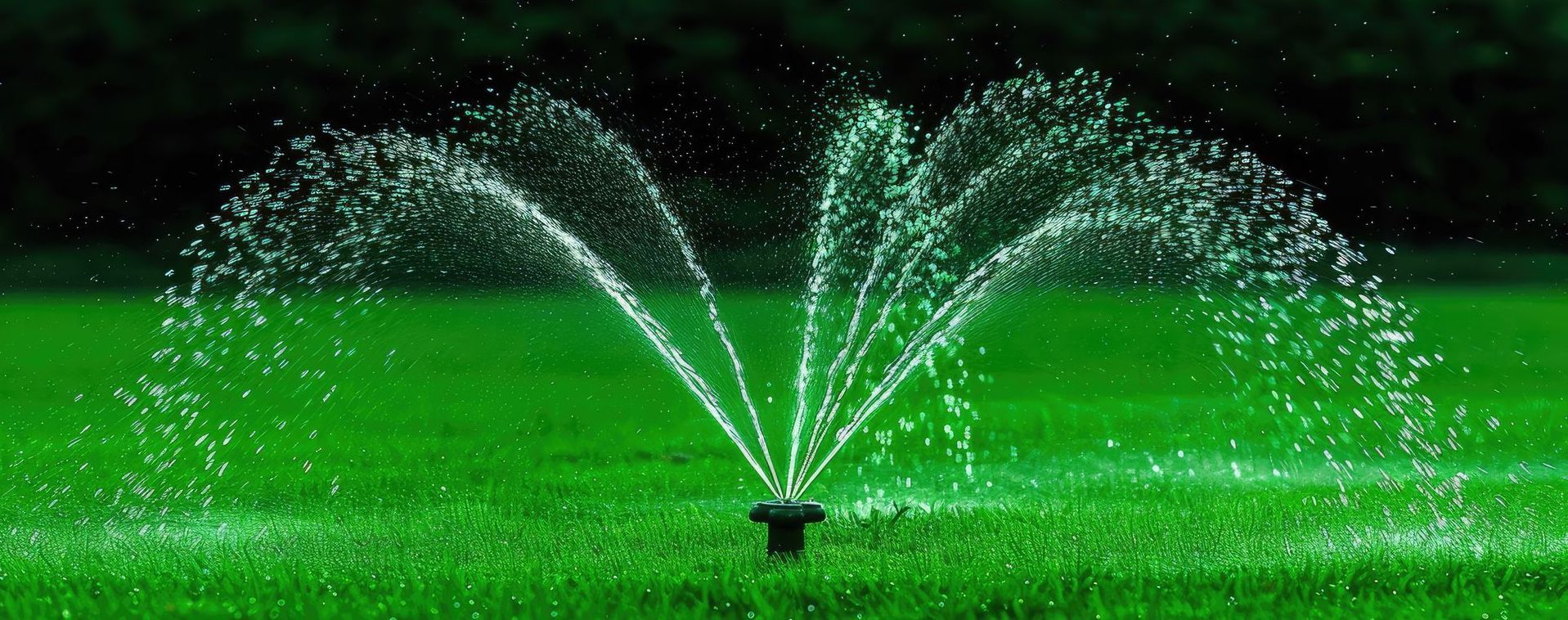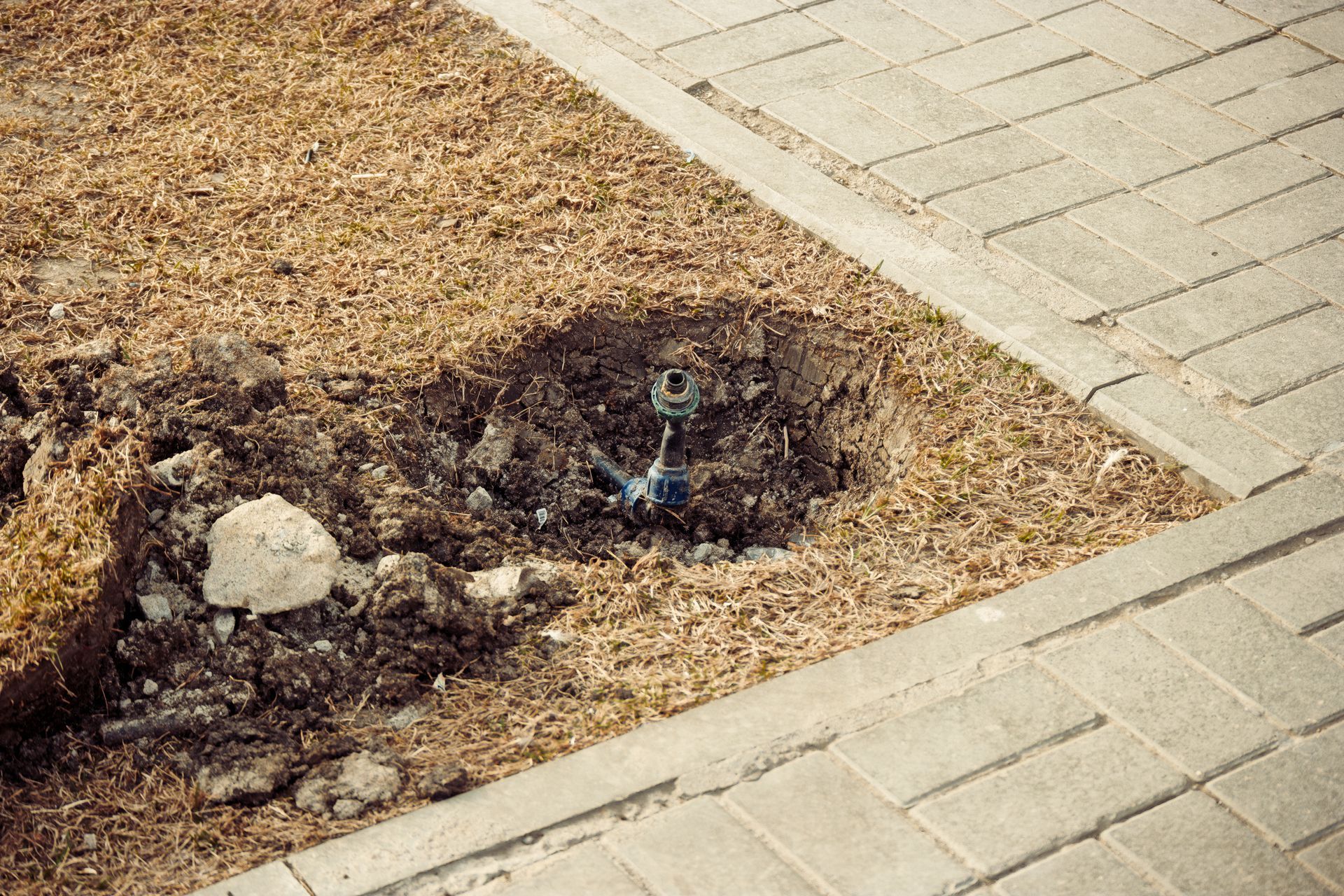Troubleshooting your Sprinkler System
Sprinkler systems are essential for maintaining healthy landscapes, particularly in the Southwest's arid climate, where water conservation is crucial. Common problems include issues with spray heads, rotor systems, and main lines. This article addresses some fixes, and the best troubleshooting practices for all of these.
Uneven Water Distribution in Sprinkler Systems
Uneven water distribution in sprinkler systems will not only impact the health of your landscape, but become very unsightly, as well. This problem often stems from several key issues:
Clogged, Damaged, or misaligned Spray Heads/Rotors:
- Over time, debris such as dirt or grass clippings can clog spray heads and rotors, restricting water flow and causing uneven coverage.
- Physical damage, or older worn out components will obviously disrupt their functionality.
- Spray heads or rotors that are not correctly aligned can result in water being directed away from intended areas, leading to dry spots in one area or overwatering in another.
Pressure Imbalances:
- Water pressure that is either too high or too low, can definitely affect the performance of spray heads and rotors.
Troubleshooting Steps
Inspect and Clean Spray Heads and Rotors: Remove any debris from spray heads and rotors. Check for physical damage and ensure nozzles are clear. Cleaning involves disassembling parts if necessary and flushing out any blockages. If cleaning doesn’t resolve the issue, replacing clogged or damaged parts may be necessary.
Adjust Alignment of Spray Heads and Rotors: Ensure that spray heads and rotors are positioned correctly to cover their designated areas. Adjust the arc and radius settings to correct any misalignment.
Check and Adjust Water Pressure: Use a pressure gauge to measure the water pressure in the system. If pressure is too high or too low, adjust the pressure regulator or valves accordingly to achieve optimal performance. Be sure to identify faulty components by examining their operation. Replace any defective spray heads, rotors, or other parts to restore proper functionality.

Leaking or Broken Main Lines
Physical Damage: Main lines can suffer damage from landscaping equipment, excavation, or shifting soil, which may lead to leaks or breaks. Also, pipes can degrade due to constant pressure fluctuations, environmental conditions, shoddy installation, or low quality pipes.
Inspect Main Lines for Leaks: To detect leaks, inspect the area around the pipes for significant wet spots or soil erosion. For underground leaks, turn off the system and use a pressure gauge to identify drops in pressure. Additionally, listen for hissing sounds that indicate escaping water.
Repair or Replace Damaged Sections: For minor leaks, apply pipe repair clamps or sealant. For more significant damage, cut out the damaged section using a pipe cutter and replace it with a new segment. Ensure proper sealing with fittings to prevent future leaks. Of course, this will entail digging up the section of pipe where you “think” the repair needs to be done.
Pressure Issues
Fluctuations in Main Line Pressure: Pressure issues can arise from irregular water supply or blockages within the system. Or, it can be a malfunctioning regulator causing inconsistent pressure, affecting the system’s performance.
Diagnose Pressure Problems: Use a pressure gauge to measure water pressure at various points in the system. Identify any deviations from the normal pressure range to pinpoint where fluctuations are occurring.
Repair or Replace Pressure Regulators
Procedures: If the pressure is too high or low, adjust the pressure regulator settings. If adjustment does not resolve the issue, replace the regulator with a new one, ensuring correct installation and calibration. Also, debris or wear can cause valves to clog or malfunction, impacting water flow. Check valves for debris and clean them by flushing out any blockages.
Electrical Issues: for automatic valves, electrical faults or wiring issues can prevent proper operation. Examine the wiring and connections for signs of damage or disconnection. Use a multimeter to test electrical components and verify their functionality.

Preventative Maintenance
Importance of Routine Checks: Conduct regular inspections of your sprinkler system to identify and address potential issues early. Inspect components such as spray heads, rotors, and main lines for signs of wear or damage.
Adjusting for Seasonal Changes: Modify watering schedules based on seasonal weather patterns to ensure optimal water use. Reduce watering frequency during cooler months and increase it during hotter periods.
Preparing Systems for Cold Weather: In regions prone to freezing temperatures, drain the system to prevent water from freezing inside the pipes. Insulate exposed pipes and use heat tape if necessary to protect against cold weather.
When to Call a Professional for Your Sprinkler System
Certain problems require the expertise of a professional. Knowing when to seek professional help ensures your system operates efficiently, saves you time, and prevents further damage. Here’s when to call in the experts:
Major Leaks or Extensive Damage: If you encounter substantial leaks or damage to your main lines, such as large-scale pipe bursts or extensive erosion, addressing these issues on your own can be challenging. Major leaks can disrupt water distribution, leading to significant property damage, water waste, and exorbitant water bills.
Why Professional Help is Needed: Professionals have the advanced tools and experience to accurately locate and repair major leaks. They can perform comprehensive inspections to determine the full extent of the damage and ensure all affected areas are properly repaired.
System Design Flaws: Sometimes, the underlying problem with your sprinkler system may be related to design flaws, such as improper installation, inefficient layout, or inadequate coverage. These issues can lead to uneven watering and higher water bills.
Landscape professionals can evaluate your system’s design and identify flaws that impact its efficiency. They can redesign or reconfigure the system to enhance coverage, improve water usage, and address any layout issues that affect overall performance.
Expertise and Advanced Equipment
Experts use specialized tools and equipment, such as leak detection devices, pressure gauges, and advanced diagnostic tools. These instruments enable precise troubleshooting and repairs, which might be challenging to achieve with basic DIY tools.
For complex issues such as major leaks or system design flaws, relying on professional assistance is a smart choice that pays off in the long run. Landscape Laveen has been installing, repairing, and troubleshooting small and large sprinkler systems for years. Give us a call, text or an email to help you with your problem. This is what we do!

Laveen, Arizona, United States of America

OPENING HOURS
- Mon - Fri
- -
- Saturday
- -
- Sunday
- Closed




